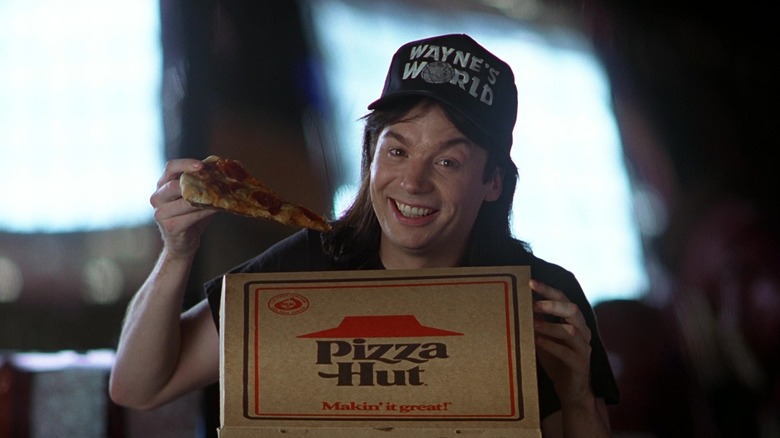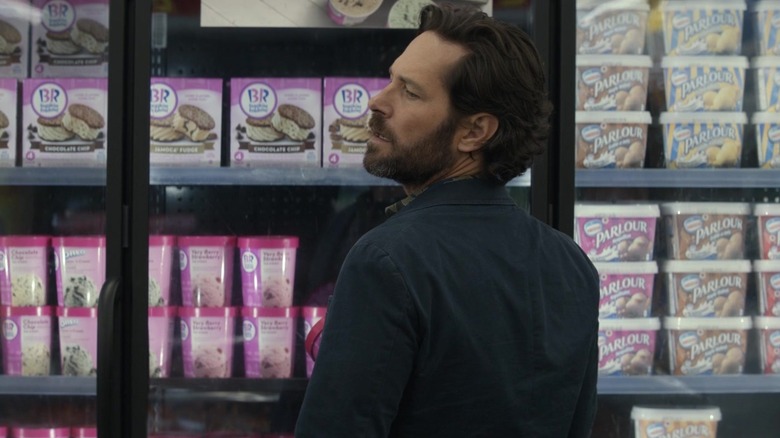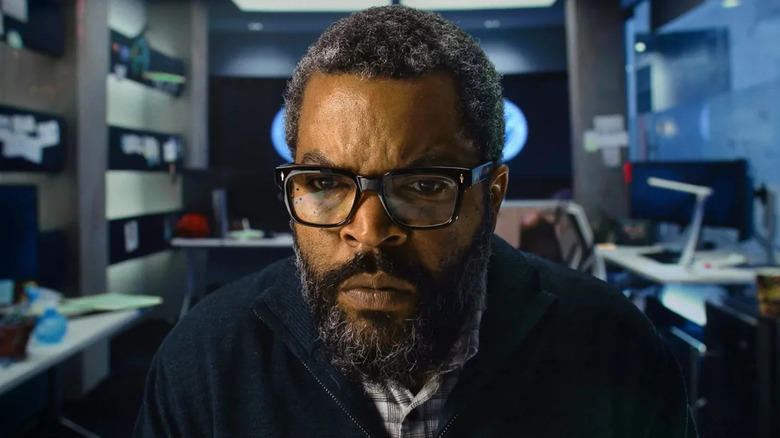How Much Product Placement Costs In Movies & Why We're Going To See More Of It
In 1955, Hollywood starlet Joan Crawford married her fourth husband, Alfred Steele, the chairman of the board of the Pepsi Corporation. As a celebrity, she immediately began advertising for the soda product, traveling extensively and appearing in print ads. Crawford's and Steele's marriage only lasted a few years, however, as Steele unexpectedly suffered a fatal heart attack in 1959 at the age of 57. Crawford thereafter became both a member of the Pepsi board of directors and the brand's goodwill ambassador. Noticeably, Pepsi products began appearing on camera in movies starring Crawford. Just watch William Castle's 1964 film "Straight-Jacket" and you'll note that a case of Pepsi is clearly visible on a shelf in her character's kitchen.
This certainly wasn't the first case of product placement in a movie, but it was one of the more blatant: The goodwill ambassador for Pepsi was hawking Pepsi in the middle of a movie. Cinema itself was becoming a commercial. The very first instance of product placement was probably in the Buster Keaton short film "The Garage" from 1920, which prominently featured the logo for Red Crown Gasoline on a wall behind the actors. In 1920, this was considered incredibly gauche, an obvious shill for a local product in the middle of an otherwise innocuous comedy short.
Since then, of course, Madison Avenue has become a planet-sized, Blob-like entity, seeping its way into every possible crack of our imaginations. Major corporations now pay huge amounts of money (as in hundreds of thousands of dollars, if not millions in some cases) to have their products inserted into high-profile feature films, understanding that it serves as advertising. Audiences are aware it's happening, and we're often annoyed when we notice, and yet, the practice continues unabated. Indeed, when interviewed by Empire Magazine, Matt Bonin (a managing partner at the U.S. ad agency Alto) pointed out that major studio motion pictures are way too expensive to cease making advertising deals. We may hate product placement, but it's going to perpetuate.
Product placement will continue to happen whether we notice it or not
Again: We know product placement is happening, and we often notice it. The opening sequence of 2025's "Jurassic World Rebirth" features a discarded Snickers wrapper clogging up a security door and unleashing an army of dinosaurs. It doesn't matter that the wrapper caused mayhem; Mars, Inc. was just grateful for the exposure and likely paid handsomely for it. Heck, product placement was openly mocked in Penelope Spheeris' 1992 hit comedy "Wayne's World," wherein the main characters speak openly about how they will never bow to any sponsor ... while openly enjoying Pizza Hut, Doritos, and Reebok products.
As Bonin pointed out, gigantic studio releases are golden opportunities for advertisers. If, say, Spider-Man were to sit down and enjoy reading a magazine just for a moment during an "Avengers" movie, it would be the result of a half-million dollar deal between the magazine and the studio backing the film. In Bonin's words:
"You'd be looking at as much as half a million dollars for that, for just a few seconds' screentime. [...] If you were integrated into the storyline, or wanted multiple verbal mentions ... something like that could easily pass $5 million."
Remember the scene in Jason Reitman's "Ghostbusters: Afterlife" where Paul Rudd's character enters a Walmart and peruses the store's vast variety of Baskin-Robbins ice cream products? It's likely that Walmart and Baskin-Robbins contributed several millions of dollars to the film's budget just for that moment, like Bonin noted. Whether it's Austin Powers eating at Subway, James Bond drinking a Heineken, or Joan Crawford drinking a Pepsi, it's all helping to cover the cost of making the movie.
And with budgets out of control, these deals may be the only way to get some of the biggest movies made going forward.
Budgets are out of control, and product placement can pay for them
A movie's budget is, it seems, going to outstrip any distaste from critics or audiences when it comes to product placement. When a film begins to feel like a commercial enterprise, it ceases to be art. If its goal is to encourage purchases outside of the theater, a movie becomes tainted by its purpose. It's one of the reasons why Rich Lee's 2025 "War of the Worlds" adaptation received such negative reviews. It ultimately functions as a crass commercial for Amazon products, with Amazon delivery drones and even Amazon gift cards serving as crucial plot points.
However, as Matthew Rotondo — the head of brands at the agency Sugar23 — pointed out to Empire Magazine, product placements are typically necessary for certain types of movies to even get made. If studios want to keep churning out tentpoles for more than $200 million a pop, then they need to raise that budget somehow. Thus, Rotondo sees product placement, perhaps darkly, as a necessary part of the film business. Not only that, but he also envisions a future where products will eventually have a controlling stake in our art. To quote him directly:
"It's so expensive now to make movies, and recouping investment [at the box office] is less guaranteed than ever. So, it makes a lot of sense to look for organic ways to partner with brands. [...] Coca-Cola is associated with Christmas, so they're the company that goes out and makes the next 'Elf.'"
Two brief points: what Rotondo described is downright dystopian and a cynical way of seeing art as a product. Yes, films are expensive to make, but we go to see characters, creative sparks, and innovation.
Also, and this is a vague defense: Product placement may be necessary in the sense that we live in an increasingly branded world. One cannot shoot a scene in an ordinary kitchen, for example, without advertising the products the characters bought. To be sure, notable products show up in our everyday lives. At this point, product placement is practically akin to realism.


